An all to easy to walk past without noticing is a narrow subterranean passage that runs underneath the posh houses next to Green Park giving access to the quiet streets behind.
This area was initially laid out as private gardens for nearby Cleveland House, and Green Park wrapped around the top of the area.
However, the top section was sold off for housing, and by the 1740s, the layout of roads as we would recognise them today was completed
The alley was created when a row of grand houses were built next to Green Park, with a small gap left between numbers 23 (now 21/22) and 24 (now 23). The entire line of houses here were badly damaged during WW2, and later pulled down, leaving only number 23 standing – and if you look up at the buildings, it’s pretty obvious which is the old and which are the modern replacements.
When the replacement buildings were erected, the alley shifted slightly southwards.
The large block of flats, Castlemaine House, that’s there today was two buildings, with the alley between them — you can just about see the gap between the two leftmost buildings in this 1934 photo. When the modern block was built, the alley moved to the edge of the plot, and became a subterranean passage.
The architect of Castlemaine House is the brutalist architect, Denys Lasdun, who was also responsible amongst many buildings, for the National Theatre on the Southbank.
During the construction of the block of flats in the mid-1950s, an old Ice Well was discovered underneath the site, which would have stored winter ice, possibly from the Green Park reservoir in a cool basement for use in the summer months.
The alley is unnamed in most documents but shows up as Queen’s Passage in a couple of recent planning applications for Castlemaine House, so that’s the name I am using.
If approaching from Green Park, it’s a small gap in the fences along Queen’s Walk lined with high brick walls. Head down the slope and you pass through an exceptionally utilitarian space for posh St James.
Concrete walls, with evidence of graffiti in the past, and drain pipes above your head, this is very much a basic utility that’s to be used but not admired. No other passageway in this part of London is so basic in design, which is pretty much why we should all pay a visit to it.
You emerge up another slope into St James Place, and the rarified world of the super-rich.

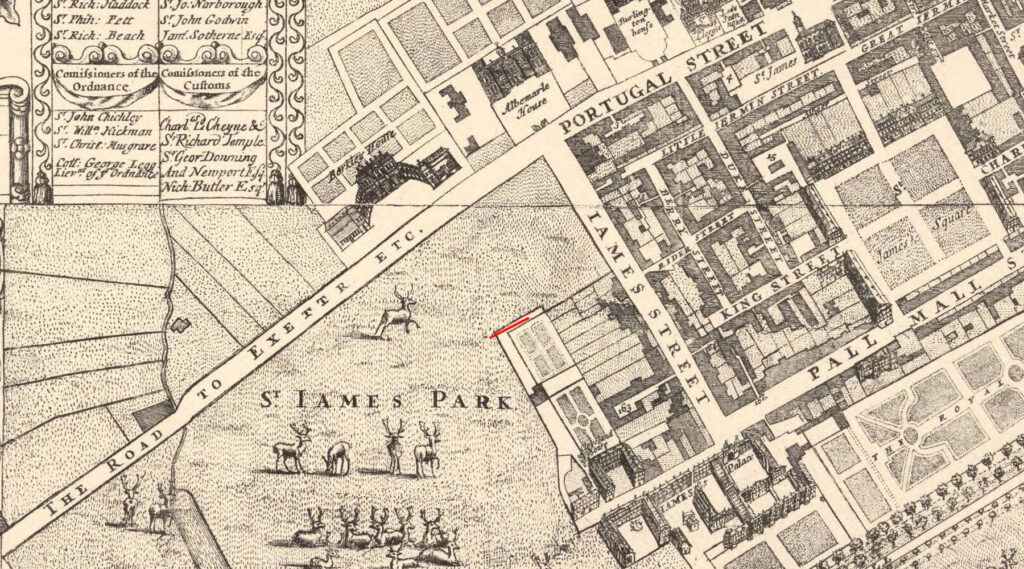
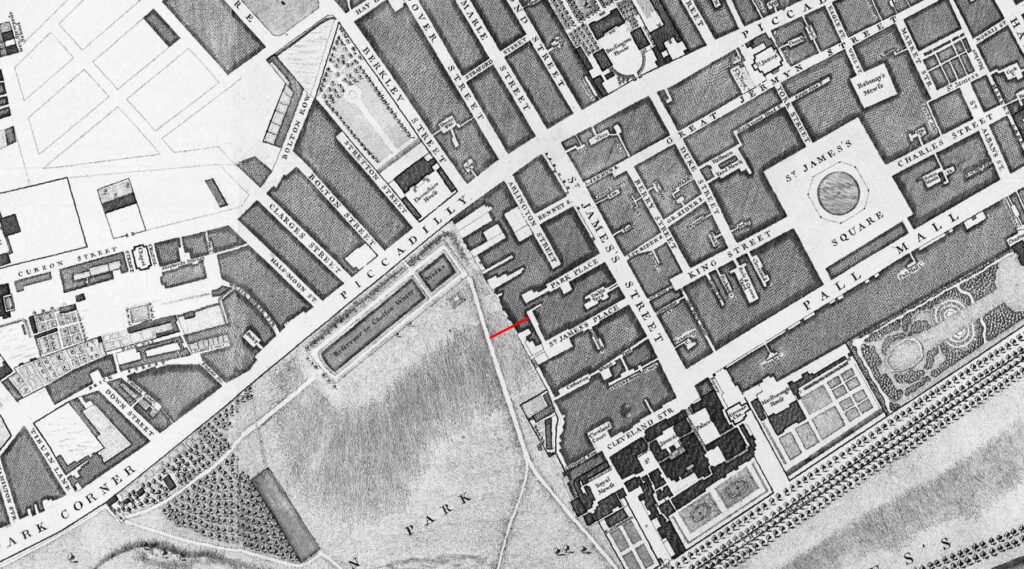
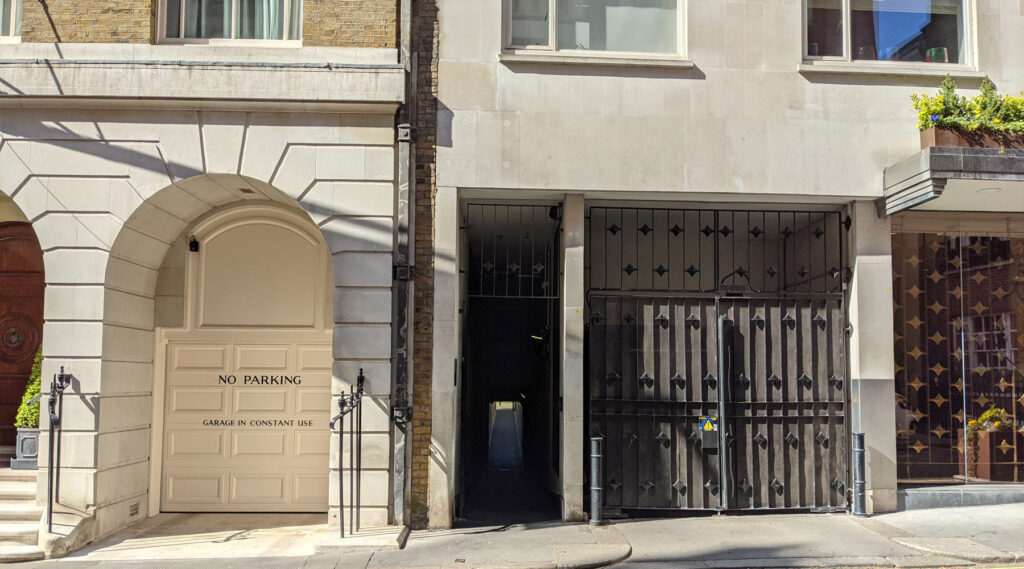
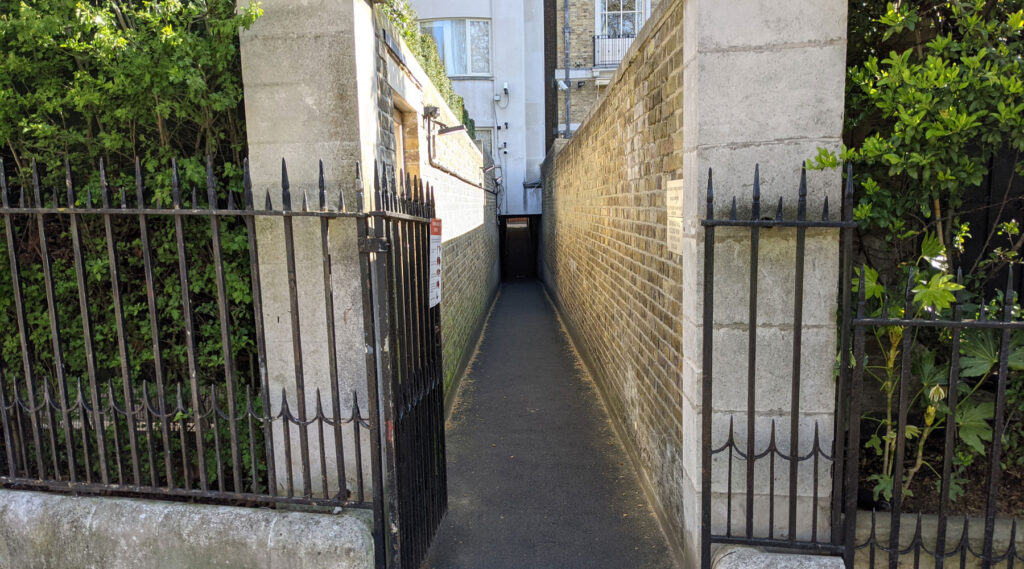
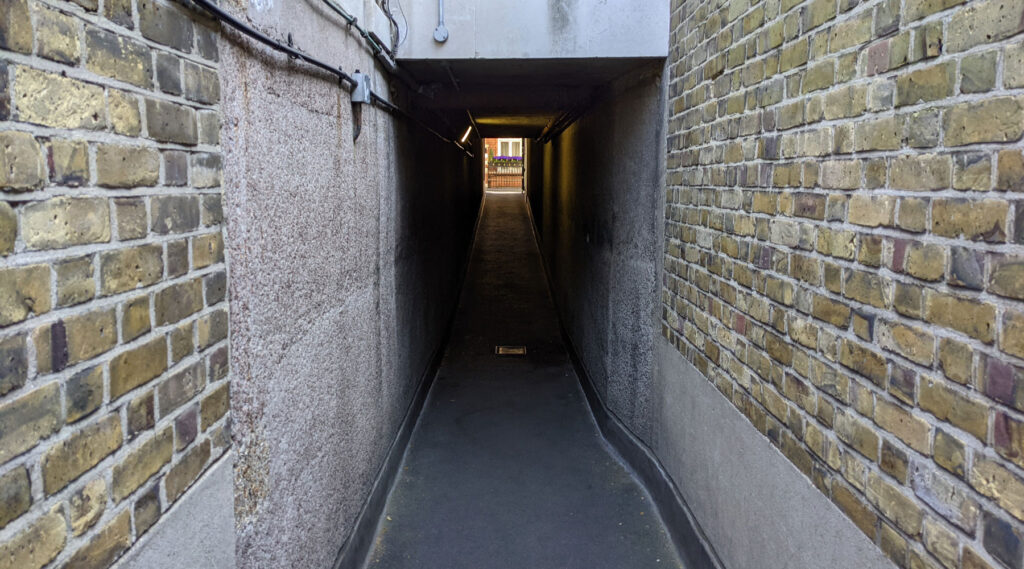
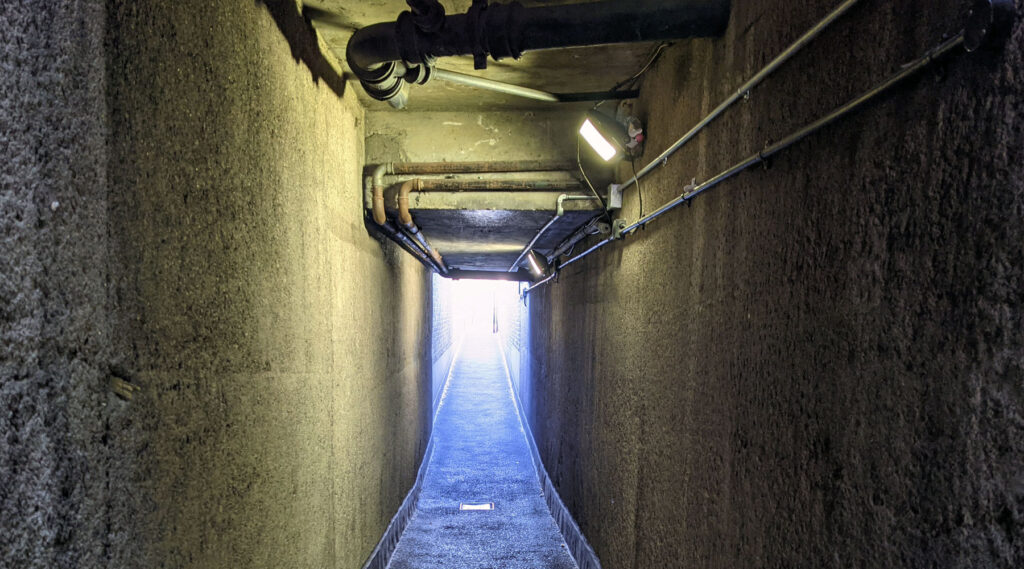






On my first trip to London I ended up walking through this alley. I think we were trying to get to Buckingham palace. It was pre smart phone so god knows what led us down there
My grt grandparents lived worked at 50 St. James’s Street 1880s,i worked in Arlington Street behind the club they lived,, The Devonshire. Maybe they walked the alley you describe(photos)..they moved to lavender Hill, and later to Maidenhead, berks…
Regards….. Stuart Bampton.
If you have any details of the club, Devonshire in the period 1870s 80s I would like to no, thank you. Believe the liberals used part of the club as Head qrts in 1870s.My grt, grt grandfather may have been civil service clerk with the club.. Henry Fitzgerald.. Lived chelsea/Pimlico..
Regards Stuart Bampton.
This is a welcome cut through to clubland when stuck in traffic on Piccadilly on the 22 bus. This and the one past Spencer House which is less subterranean and didn’t bounce in the middle like this one did.
A novel route.
Close by is another passage under a house where a passage incorporating steps links
Arlington St
https://goo.gl/maps/KJrhp3Hy64p88Yjh9
With Park Place
https://goo.gl/maps/2e5TBC5djRtFJ2yQ7